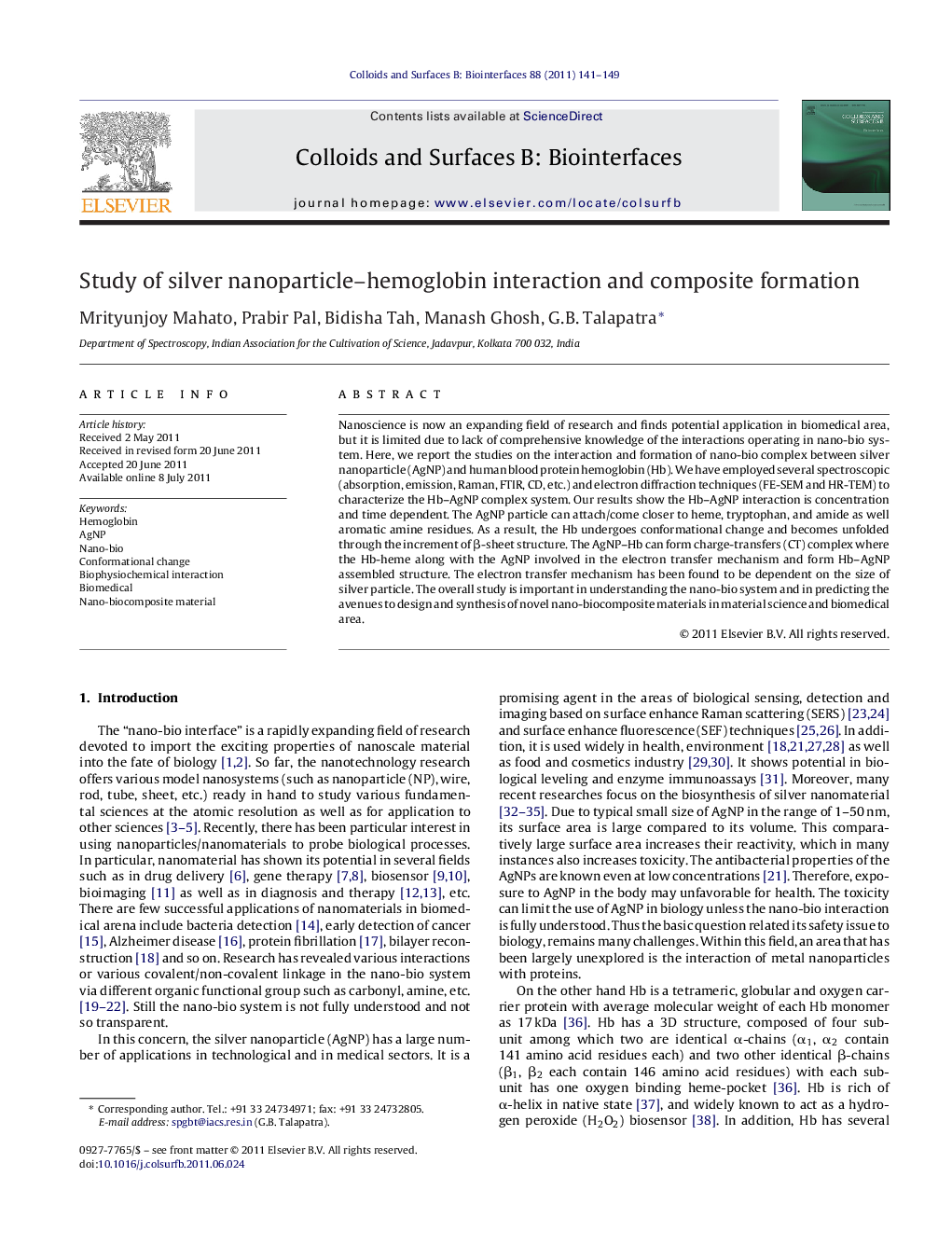| Article ID | Journal | Published Year | Pages | File Type |
|---|---|---|---|---|
| 601035 | Colloids and Surfaces B: Biointerfaces | 2011 | 9 Pages |
Nanoscience is now an expanding field of research and finds potential application in biomedical area, but it is limited due to lack of comprehensive knowledge of the interactions operating in nano-bio system. Here, we report the studies on the interaction and formation of nano-bio complex between silver nanoparticle (AgNP) and human blood protein hemoglobin (Hb). We have employed several spectroscopic (absorption, emission, Raman, FTIR, CD, etc.) and electron diffraction techniques (FE-SEM and HR-TEM) to characterize the Hb–AgNP complex system. Our results show the Hb–AgNP interaction is concentration and time dependent. The AgNP particle can attach/come closer to heme, tryptophan, and amide as well aromatic amine residues. As a result, the Hb undergoes conformational change and becomes unfolded through the increment of β-sheet structure. The AgNP–Hb can form charge-transfers (CT) complex where the Hb-heme along with the AgNP involved in the electron transfer mechanism and form Hb–AgNP assembled structure. The electron transfer mechanism has been found to be dependent on the size of silver particle. The overall study is important in understanding the nano-bio system and in predicting the avenues to design and synthesis of novel nano-biocomposite materials in material science and biomedical area.
Graphical abstractFigure optionsDownload full-size imageDownload as PowerPoint slideHighlights► Formation of nano-bio complex between silver nanoparticle (AgNP) and hemoglobin (Hb). ► The Hb–AgNP interaction is concentration and time dependent. ► The Hb undergoes conformational change and becomes unfolded. ► AgNP–Hb can form charge transfers complex and it is dependent on the size of AgNP.
